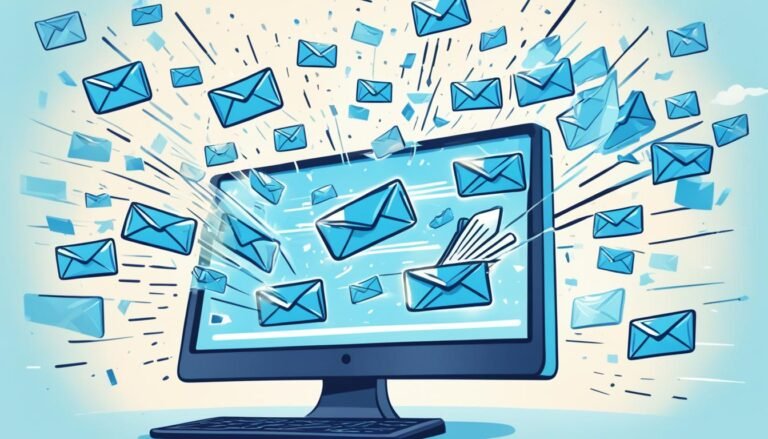Transforming Your Email Strategy For Highest ROI
Unlock the power of email marketing and learn how strategic communication can dramatically increase your revenue. In this comprehensive guide, we explore effective tactics to turn your email outreach into a profitable venture.
Table of Contents
- The Importance of Email Marketing
- Optimizing Preview Text for Higher Open Rates
- Crafting Clear and Effective CTAs
- Using Annual Renewal Fees to Boost Revenue
- Finding the Right Email Cadence
- Timing Your Emails for Maximum Impact
- Leveraging Testimonials for Better Engagement
- Understanding Open Rates vs. Click-Through Rates
- Final Thoughts on Email Marketing Strategy
The Importance of Email Marketing
Email marketing remains one of the most effective channels for generating revenue and nurturing customer relationships. Unlike social media platforms where visibility is dictated by algorithms, email provides a direct line of communication to your audience. When done correctly, it can yield an impressive return on investment (ROI), often cited between 35 to 45 times the initial investment.
This high ROI is primarily because email marketing capitalizes on relationships that have already been established. You’ve likely already invested in acquiring these leads, which means email serves as a follow-up tool to remind them of your offerings. Consequently, the only significant costs associated with email marketing are the tools you use and potentially the content creators you hire.
Understanding ROI in Email Campaigns
Understanding the ROI of your email campaigns is crucial for justifying the time and resources you invest. To calculate ROI, consider both the revenue generated from your campaigns and the costs involved in executing them. A simple formula to determine ROI is:
- Calculate the total revenue generated from your email campaign.
- Subtract the total cost of the campaign (including software, design, and time).
- Divide the result by the total cost and multiply by 100 to get a percentage.
A positive ROI indicates that your email marketing efforts are worth the investment, while a negative ROI suggests it’s time to reassess your strategy.
Overcoming the Fear of Unsubscribes
Unsubscribes can be daunting for email marketers. However, it’s essential to view them through a different lens. When someone unsubscribes, it doesn’t necessarily reflect a failure on your part; rather, it may indicate that your content is not resonating with that individual anymore.
Making the unsubscribe process easy can help maintain a healthy email list. An engaged audience is far more valuable than a large, disinterested one. Moreover, a clean list improves deliverability rates, ensuring your messages reach those who truly want to hear from you.
The Power of List Segmentation
List segmentation is a powerful tactic that can significantly enhance the effectiveness of your email marketing. By dividing your email list into smaller groups based on specific criteria—such as demographics, purchase history, or engagement levels—you can tailor your messages to meet the distinct needs of each segment.
This targeted approach ensures that your audience receives relevant content, increasing the likelihood of engagement. Research indicates that segmented campaigns can lead to a 760% increase in revenue, highlighting the importance of this strategy in optimising your email marketing efforts.
Crafting Effective Subject Lines
The subject line is your first impression; it can determine whether your email gets opened or ignored. Crafting effective subject lines requires a mix of creativity and strategy. Aim for clarity, urgency, and curiosity to entice your audience to click.
- Keep it concise—aim for 6-10 words.
- Use action-oriented language to prompt engagement.
- Personalise when possible, including the recipient’s name or relevant information.
Testing different subject lines through A/B testing can provide insights into what resonates best with your audience.
Delivering Value in Your Emails
Every email you send should provide value to the recipient. Whether that value comes in the form of informative content, special offers, or exclusive insights, it’s crucial to ensure your audience feels rewarded for opening your emails.
Consider adopting a consistent structure that delivers a quick win or takeaway in every message. This not only reinforces the habit of opening your emails but also builds a loyal readership over time.
Designing for Mobile Optimization
With a significant portion of email opens occurring on mobile devices, ensuring your emails are mobile-optimised is non-negotiable. A responsive design adapts seamlessly to various screen sizes, enhancing the user experience.
- Use single-column layouts to simplify navigation.
- Ensure buttons and links are easily clickable.
- Keep text concise and legible, using larger font sizes.
Testing your emails on multiple devices before sending can help identify any design issues that may hinder engagement.
Creating a Consistent Layout
Consistency in your email layout fosters familiarity and trust. By establishing a standard format for your emails, you help readers know what to expect, which can increase engagement rates.
Consider using templates for your emails that include designated sections for the subject, main content, CTA (call-to-action), and PS (postscript). This structure can streamline your design process and enhance the overall readability of your messages.
The Importance of Speed to Contact
Speed to contact is a critical factor in maximising the effectiveness of your email campaigns. The quicker you reach out to leads after they express interest, the higher the likelihood of conversion. Research shows that contacting leads within the first few minutes can increase sales significantly.
Implementing automated responses or reminders can help ensure that your team follows up promptly. This immediate engagement not only enhances the customer experience but also demonstrates your commitment to their needs.
Optimizing Preview Text for Higher Open Rates
The preview text, also known as the preheader, is a critical element of your email that can significantly influence open rates. This text appears next to or below the subject line in most email clients, providing recipients with a glimpse of what to expect inside the email.
To optimize your preview text, keep it concise and relevant. Aim for 40-90 characters that complement your subject line and provide additional context. Avoid repeating the subject line; instead, use this space to spark curiosity or highlight a benefit.
- Be Clear: Use straightforward language that communicates the email’s purpose.
- Create Urgency: Phrases like “Limited time offer” can prompt immediate action.
- Personalize: Including the recipient’s name or relevant details can increase engagement.
Testing different preview texts can yield valuable insights into what resonates best with your audience, allowing for continuous improvement in your email campaigns.
Crafting Clear and Effective CTAs
A well-crafted call-to-action (CTA) is vital for guiding your readers toward the desired outcome. Your CTA should be clear, compelling, and easy to find within your email content.
To create effective CTAs, consider the following:
- Use Action-Oriented Language: Start with strong verbs that encourage action, such as “Download,” “Subscribe,” or “Get Started.”
- Make it Visually Distinct: Use buttons or bold text to make your CTAs stand out from the rest of the content.
- Limit Options: Avoid overwhelming your readers with too many CTAs. Focus on one primary action you want them to take.
Remember, the clarity of your CTA can directly impact conversion rates. Ensure it aligns with the content of your email and resonates with your audience’s needs.
Using Annual Renewal Fees to Boost Revenue
Implementing an annual renewal fee can be an effective strategy to enhance revenue without significantly altering your pricing structure. This fee, typically equivalent to one to three months’ subscription, can be introduced as an additional charge for annual commitments.
By positioning this fee strategically, you can increase overall revenue by 8% to 24% without deterring new customers. For instance, if your monthly subscription is £39, setting an annual renewal fee at £99 can elevate your annual revenue per customer from £468 to £567, providing a substantial increase in profit margins.
This approach allows you to maintain your advertised monthly price while benefiting from the additional revenue generated by the renewal fee. It’s a win-win situation that enhances profitability without compromising customer acquisition.
Finding the Right Email Cadence
Determining the optimal frequency for sending emails is crucial for maintaining engagement without overwhelming your audience. While there is no one-size-fits-all answer, many successful marketers recommend an average cadence of three times per week.
Starting with a less frequent schedule, such as once a month, can help you gauge your audience’s response. As you build confidence and gather insights, you can gradually increase the frequency. Here are some tips for finding your ideal cadence:
- Monitor Engagement: Pay attention to open rates and unsubscribe rates to find a balance that works for your audience.
- Quality Over Quantity: Focus on providing valuable content rather than merely increasing the number of emails sent.
- Be Flexible: Adjust your frequency based on audience feedback and seasonal trends.
Ultimately, the goal is to provide consistent value that keeps your audience engaged and eager to hear from you.
Timing Your Emails for Maximum Impact
Timing is a critical factor in the success of your email campaigns. Sending emails at the right time can significantly increase open rates and engagement. Research indicates that certain days and times yield better results.
For B2C emails, Mondays and Tuesdays generally see higher open rates, while Wednesdays are optimal for B2B communications. Additionally, sending emails just before or after lunch, around 10 a.m. to noon and 1 p.m. to 3 p.m., can help you capture attention when recipients are more likely to check their inboxes.
- Consider Time Zones: If your audience is spread across different regions, factor in time zone differences when scheduling your emails.
- Experiment: Test different sending times to determine what works best for your specific audience.
By strategically timing your emails, you can enhance visibility and increase the likelihood of engagement.
Leveraging Testimonials for Better Engagement
Testimonials can serve as powerful tools for boosting engagement and building trust with your audience. They provide social proof and can help potential customers feel more confident in their decision-making.
When incorporating testimonials into your emails, consider the following strategies:
- Use Pain-Based Hooks: Highlight the challenges your customers faced before using your product or service to create a relatable narrative.
- Keep It Authentic: Use real testimonials that reflect genuine experiences, ensuring they resonate with your audience.
- Visual Appeal: If possible, include images or videos alongside testimonials to enhance their impact.
By effectively leveraging testimonials, you can create compelling content that not only engages your audience but also drives conversions.
Understanding Open Rates vs. Click-Through Rates
Understanding the difference between open rates and click-through rates (CTR) is essential for evaluating the effectiveness of your email campaigns. Open rates indicate how many recipients opened your email, while CTR measures how many of those opened emails clicked on a link within the message.
Both metrics provide valuable insights:
- Open Rates: Reflect the effectiveness of your subject line and preview text. A high open rate suggests your audience is interested in your content.
- Click-Through Rates: Indicate the level of engagement and interest in your call-to-action. A strong CTR suggests your content resonates well with your audience.
By analyzing both metrics, you can identify areas for improvement and refine your email marketing strategy accordingly.
Final Thoughts on Email Marketing Strategy
Email marketing presents a unique opportunity to connect with your audience and drive revenue. By implementing the strategies discussed, you can enhance your email campaigns and foster stronger relationships with your subscribers.
Focus on delivering consistent value, optimizing your content, and analyzing your performance metrics. Continuous testing and refinement will enable you to adapt to changing audience preferences and market conditions.
Ultimately, a well-executed email marketing strategy can lead to significant growth and success for your business.
Free Online business and digital marketing resources
Browse Content Hub







